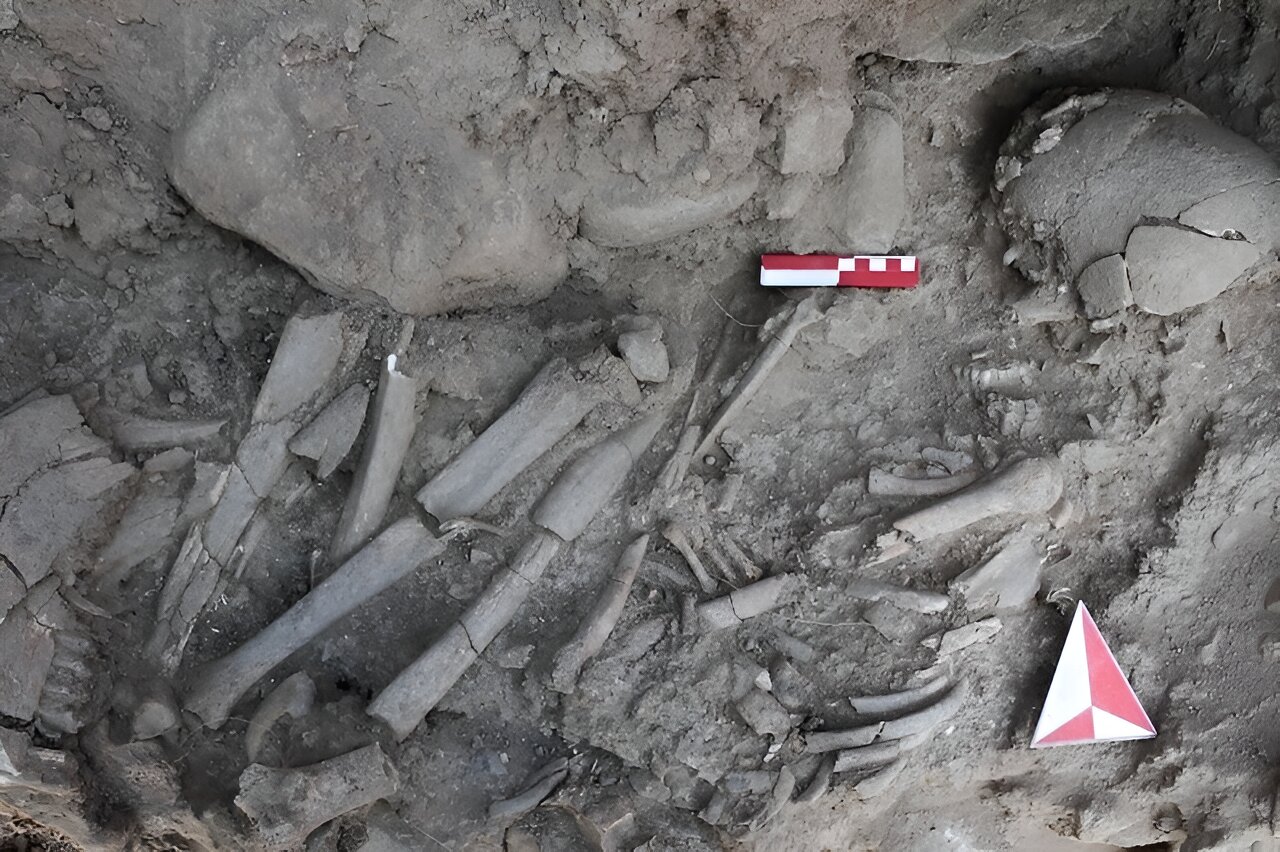A small team of archaeologists working in the Republic of Türkiye has made a significant discovery, identifying a woman buried approximately 12,000 years ago in a Neolithic settlement called Çemka Höyük as a possible shaman. Their findings, published in the journal L’Anthropologie, provide fascinating insights into the burial practices and potential spiritual beliefs of a pre-pottery Neolithic village.
The discovery occurred in 2019 at Çemka Höyük, located in the southeastern region of Türkiye. This settlement dates back to a time when the people were transitioning from a hunter-gatherer lifestyle to establishing small, stable communities. The woman, believed to have been between 25 and 30 years old at the time of her death, was buried beneath the floor of a mud-built structure—an established practice for burials during that era.
What sets this burial apart from others of the time is the unusual array of animals buried alongside the woman. While it was common to find human remains under homes, this specific burial featured a variety of wild animals, which was highly unusual. At the time of her death, domestication of animals had not yet begun, so all the animals buried with her were wild.
The most striking element of the burial was the careful placement of the animals’ remains. An aurochs (an extinct type of wild cattle) skull was positioned just above her body, with its jaw separated and placed at her feet. Other animal remains included the wings of a partridge, the legs of a marten, and scattered bones from sheep or goats. The meticulous arrangement of these animals suggests they held significant meaning.
Adding to the mystery, the woman’s body was covered with a large block of limestone—a feature that further indicates her special status. This combination of factors led the researchers to propose that the woman may have been a shaman, a figure believed to possess a unique connection to the spiritual world, especially to spirits with malevolent intent. Shamans in various cultures have often been associated with animals, believed to serve as spiritual intermediaries.
The researchers speculate that the inclusion of animals in the burial may have been intended to reflect the woman’s close relationship with the spiritual realm, as well as her possible role as a protector of the community from harmful spirits. The unique aspects of this burial distinguish it from other contemporaneous graves, where such rituals were not observed, further suggesting the woman held a special role within her society.
This discovery offers a rare glimpse into the spiritual and social structures of a pre-pottery Neolithic community. The woman’s burial, with its careful arrangement of animals and the unusual limestone covering, speaks to the complex belief systems that may have been in place long before the advent of written history. These findings provide a window into a time when humans were beginning to settle into more permanent communities while maintaining a deep connection with the natural and spiritual worlds.
As researchers continue to study the site, this discovery at Çemka Höyük may help to illuminate the role of spiritual leaders in early human societies, shedding light on how ancient people understood the world around them and sought to influence it through rituals and beliefs centered around shamans and the spirits they were believed to commune with.
